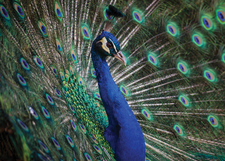Custom file monitoring
Command Line – tail

© Lead Image photo by Andre Mouton on Unsplash
When it comes to file monitoring, tail's replacements, colortail and MultiTail, offer more sophisticated control over how your information is displayed.
Pagers are a basic necessity for administering a system. That necessity is especially strong in Linux, where configuration settings are stored in text files. The best-known pagers, of course, are cat, less, and more, all of which present the entire contents of a file. However, if you want to monitor a file over time, such as the logs in /var/log or /tmp, the required tool is one that displays the lines at the end of the file, where new information is appended. The original tool for this purpose is tail, but, these days, it is increasingly being replaced by colortail or MultiTail. All these commands share the same basic functionality, but the replacements offer more control over how information is displayed (Figure 1).
tail and colortail
The original command, of course, is tail [1] (not to be confused with Tails Linux, which is used for secure browsing). By default, tail displays the last 10 lines of a file that it is monitoring. However, you can use
[...]
Buy this article as PDF
(incl. VAT)
Buy Linux Magazine
Subscribe to our Linux Newsletters
Find Linux and Open Source Jobs
Subscribe to our ADMIN Newsletters
Support Our Work
Linux Magazine content is made possible with support from readers like you. Please consider contributing when you’ve found an article to be beneficial.

News
-
Parrot OS Switches to KDE Plasma Desktop
Yet another distro is making the move to the KDE Plasma desktop.
-
TUXEDO Announces Gemini 17
TUXEDO Computers has released the fourth generation of its Gemini laptop with plenty of updates.
-
Two New Distros Adopt Enlightenment
MX Moksha and AV Linux 25 join ranks with Bodhi Linux and embrace the Enlightenment desktop.
-
Solus Linux 4.8 Removes Python 2
Solus Linux 4.8 has been released with the latest Linux kernel, updated desktops, and a key removal.
-
Zorin OS 18 Hits over a Million Downloads
If you doubt Linux isn't gaining popularity, you only have to look at Zorin OS's download numbers.
-
TUXEDO Computers Scraps Snapdragon X1E-Based Laptop
Due to issues with a Snapdragon CPU, TUXEDO Computers has cancelled its plans to release a laptop based on this elite hardware.
-
Debian Unleashes Debian Libre Live
Debian Libre Live keeps your machine free of proprietary software.
-
Valve Announces Pending Release of Steam Machine
Shout it to the heavens: Steam Machine, powered by Linux, is set to arrive in 2026.
-
Happy Birthday, ADMIN Magazine!
ADMIN is celebrating its 15th anniversary with issue #90.
-
Another Linux Malware Discovered
Russian hackers use Hyper-V to hide malware within Linux virtual machines.


